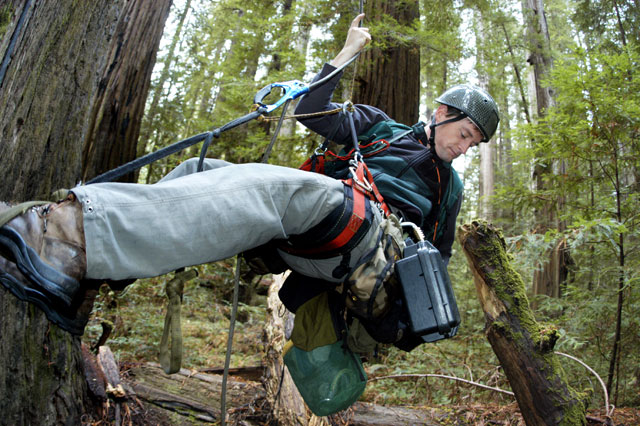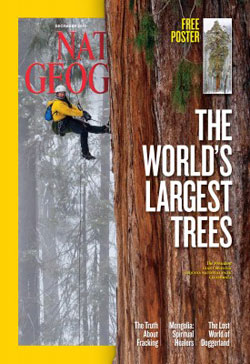
High-altitude climbing research and painstaking measurements by Sillett and his colleagues show that the giant sequoia, named the President about 90 years ago, ranks number two among all big trees ever measured, National Geographic reports.
In addition to confirming the tree’s near-record size, state-of-the-art climbing technology and extreme precision have enabled the Sillett operations crew to pinpoint startling facts, among them: a big tree’s rate of growth can increase despite old age.
That negates the long-held belief that wood production diminishes as trees grow old, the premise undergirding short-rotation forestry. The Sillett crew’s findings indicate it does not apply to giant sequoias and other tall species, like coastal redwoods.

Twenty-seven feet in diameter at the base, the President’s spire rises 247 feet and is estimated to house nearly two billion leaves. It stands some 7,000 feet above sea level in the southern Sierra Nevada.
Sillett calls the giant sequoias “snow trees” because they endure and thrive for months each year in the deep freeze of winter. Despite the short growing season, they can grow larger than their coastal redwood counterparts.
The Sillett crew’s breakthrough, high-altitude research—numerous and demanding human ascent operations, laborious raising of cameras, the taking of bore samples and sophisticated mathematical modeling—is a key component of the 10-year Redwoods and Climate Change Initiative, led by Humboldt State and UC Berkeley redwoods scientists under the auspices of the Save the Redwoods League, San Francisco. The objectives are to gather research on how redwoods can survive immense environmental alterations and devise a long-term, comprehensive strategy for redwoods adaptation to protect and restore redwood forestlands.
The research is aimed at data-based approaches to protection against climate change. It will be based in part on a network of forest plots to be monitored for more than 100 years. Study includes whole-tree and whole-forest rates of annual wood production as far back as 1,000 years.
Leading scientists Sillett and Robert Van Pelt of Humboldt State University and Todd Dawson and Anthony Ambrose of the UC Berkeley are probing the capacity of redwoods to mitigate the impact of climate changes through their own photosynthesis, fog interception, wood production and carbon sequestration.
The team will attempt to reconstruct past climates to learn how redwoods responded historically to climate change and then assess how the trees are adapting currently. Greenhouse experiments will be used to analyze how redwood seedlings and saplings from different parts of forest ranges might react to climate change.
The latest National Geographic report is posted at ngm.nationalgeographic.com/2012/12/sequoias/quammen-text.
Previously, the Sillett team’s research, including that of HSU botanist Marie Antoine, was the subject of a National Geographic cover story in October, 2009, “The Tallest Trees – Redwoods,” p. 29.
A feature article on the founding of Humboldt State’s Kenneth L. Fisher Chair in Redwood Forest Ecology appeared in Humboldt magazine, the university’s alumni publication, in the Fall 2006 edition.